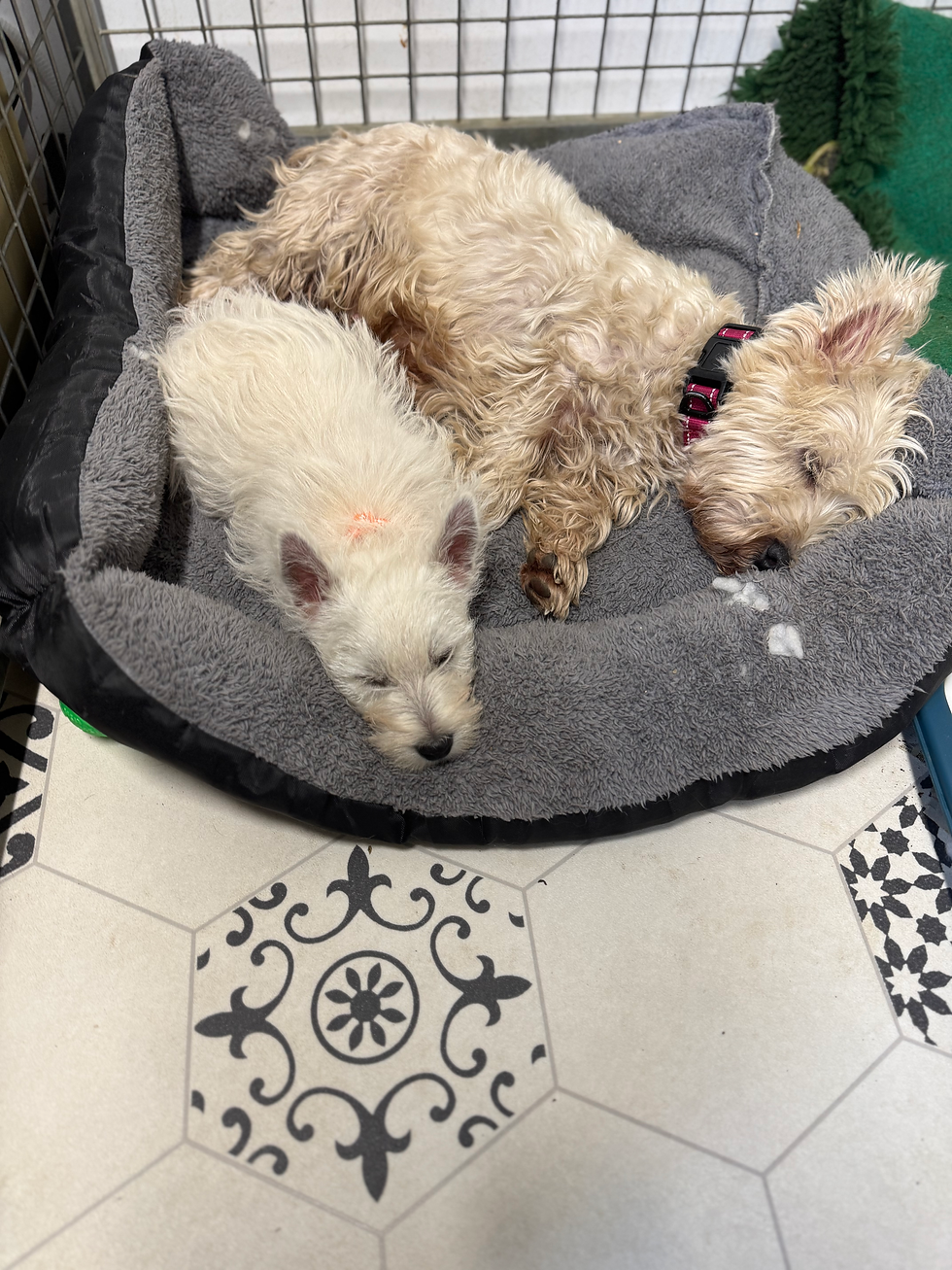Easy Puppy Crate Training Tips
- gunfieldvizslas
- Sep 29
- 3 min read
Bringing a new puppy home is an exciting time, but it also comes with challenges. One of the most important skills to teach your puppy early on is crate training. A crate can provide a safe, comfortable space for your puppy and help with housebreaking and behavior management. This guide will walk you through easy steps and practical advice to make crate training a positive experience for both you and your puppy.
Puppy Crate Training Guide: Getting Started
Starting crate training requires patience and consistency. The goal is to make the crate a place your puppy loves, not fears. Begin by choosing the right crate size. It should be large enough for your puppy to stand, turn around, and lie down comfortably but not so big that they can use one corner as a bathroom.
Place the crate in a quiet area where your puppy can feel part of the family but not overwhelmed by noise or activity. Introduce the crate gradually by leaving the door open and encouraging your puppy to explore it on their own. Use treats, toys, and praise to create positive associations.
Tips for the first few days:
Feed your puppy meals inside the crate to build comfort.
Start with short crate sessions, just a few minutes at a time.
Stay nearby initially to reassure your puppy.
Avoid forcing your puppy inside; let them enter voluntarily.

How to Make Crate Training Enjoyable for Your Puppy
Making crate time enjoyable is key to success. Puppies respond well to positive reinforcement, so reward calm behavior inside the crate with treats and gentle petting. You can also provide safe chew toys or puzzle feeders to keep your puppy entertained.
Establish a routine by crating your puppy at regular times, such as during naps, bedtime, or when you leave the house. This helps your puppy understand when crate time is expected and reduces anxiety.
If your puppy whines or barks, avoid immediately letting them out, as this can teach them that noise leads to freedom. Instead, wait for a moment of quiet before opening the door. If the crying continues, check for basic needs like bathroom breaks or hunger.
Additional suggestions:
Use a crate cover to create a den-like atmosphere.
Keep the crate clean and comfortable.
Gradually increase crate time as your puppy adjusts.

What is the 10 10 10 Rule for Puppy Training?
The 10 10 10 rule is a helpful guideline for managing your puppy’s crate time and potty breaks. It suggests that puppies can hold their bladder for about 10 minutes per month of age, up to a maximum of 10 hours overnight. This rule helps prevent accidents and teaches your puppy bladder control.
For example, a 3-month-old puppy should be taken outside every 30 minutes during the day. At night, they may be able to sleep for up to 10 hours without needing a bathroom break. Adjust this based on your puppy’s behavior and signals.
Using the 10 10 10 rule can make crate training more effective by aligning crate time with your puppy’s physical needs. It also helps you plan potty breaks and avoid frustration for both you and your puppy.
Practical steps:
Set alarms or reminders for potty breaks.
Watch for signs your puppy needs to go out.
Be consistent with timing to build good habits.

Common Challenges and How to Overcome Them
Crate training is not always smooth sailing. Some puppies may resist the crate, cry excessively, or have accidents inside. Understanding common challenges can help you troubleshoot effectively.
Puppy cries or barks in the crate:
Ensure your puppy’s needs are met before crating (bathroom, food, water).
Use calming aids like a blanket or a favorite toy.
Avoid giving attention to crying to prevent reinforcing the behavior.
Gradually increase crate time to build tolerance.
Puppy has accidents in the crate:
Make sure the crate is the right size; too big can encourage accidents.
Take your puppy out frequently using the 10 10 10 rule.
Clean accidents thoroughly to remove odors.
Puppy refuses to enter the crate:
Use treats and toys to lure your puppy inside.
Feed meals in the crate.
Practice short, positive crate sessions.
Patience and consistency are essential. If problems persist, consider consulting a professional trainer.
Final Thoughts on Puppy Crate Training
Crate training is a valuable tool that benefits both puppies and their owners. It provides a safe space for your puppy and helps with housebreaking and behavior management. By following these easy steps and using positive reinforcement, you can make crate training a positive experience.
Remember to be patient and consistent. Every puppy learns at their own pace. For more detailed advice and resources, check out these puppy crate training tips.
With time and care, your puppy will come to see their crate as a cozy retreat and a place of comfort.




Comments